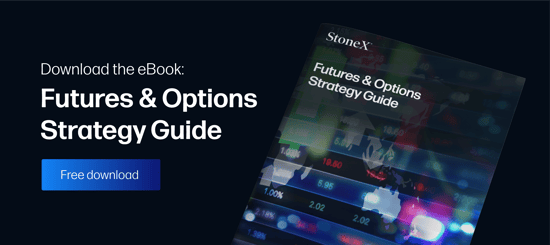According to a 2010 study published by the University of California, 80 percent of short-term traders new to the market quit within two years. In financial circles, the general consensus estimates that 95 percent eventually opt for an early exit from the market. No matter which statistic is closer to the truth, probability appears to be overwhelmingly stacked against the trader.
Although a frequently overlooked aspect of trading, risk management may be the most important element of overcoming these seemingly insurmountable odds, it’s absolutely essential to sustaining longevity in the marketplace.
Clearly defining how to enter and exit the market is a great place to start making risk management work for you.
Types of Orders
Actively engaging the futures markets presents many opportunities and challenges. In order to prosper in such a dynamic atmosphere, a trader must have a comprehensive strategy for entering and exiting the market with maximum efficiency.
Fortunately, traders have access to a variety of tools that boost trade-related efficiency. Unique order types ensure that the objectives of each trade are not compromised:
- Market orders: A market order facilitates an immediate entry into a given market. Upon its placement at the exchange, it’s executed immediately at the prevailing market price.
- Limit orders: The limit order allows a trader to buy or sell a product at a prespecified price or better. When a trader places a limit order manually on a trading DOM, it must be below current market price if a buy and above if a sell. If not, the limit order is filled at market.
- Stop orders: A stop order, commonly known as a “stop loss,” is an order that ensures a trade’s exit upon a specific price level being hit. A stop order is placed upon the market at a distinct price by the trader. When it is hit, or “taken out,” a market order is initiated closing out the trade.
Any trades are educational examples only. They do not include commissions and fees.
Implementing Stop and Limit Orders
Limit orders are typically used to buy or sell retracements of price action. The following example shows how stop and limit orders may be used for a clear-cut futures trade execution:
- Erin has a trade idea for WTI crude oil: A buy of one lot at $50.00, looking for a profit of 25 ticks with a max risk of 25 ticks looks to be a high probability trade.
- Current market price is $50.25.
- Erin places a buy limit order on the trading DOM at $50.00.
- A sell stop order is placed at $49.75. If price runs against entry, the stop order will flatten the trade upon election.
- The price pulls back to $50.00, and the limit order is filled.
- Erin places a sell limit order at $50.25 to lock in profits.
- Price bounces hard off of $50.00 and hits $50.25 with conviction, locking in a $250 profit.
Using stop and limit orders to execute this trade has several advantages:
- Erin is able to clearly define risk and protect the account’s downside. If a market order is used to enter the trade when price approaches entry, slippage can cost considerable money.
- The exact entry enhances risk management. The location of profit targets and stop losses can be quantified with 100 percent certainty according to a desired risk vs. reward scenario.
However, there are a few drawbacks to executing trades using a limit order strategy:
- The placing of a limit order does not ensure that it is filled. Market conditions must provide adequate depth at the designated prices to guarantee orders are filled. This applies to both the trade’s entry at $50.00 and its profit target at $50.25.
- In addition, it’s possible that the trade may be missed altogether. In the event that price only hits $50.01, or the buy at $50.00 is not filled, then a great entry is scrubbed.
Ultimately, limits and stops promote precision. They may not be optimal tools for every market, but through experience and study they can become a valued weapon in the trader’s arsenal.
Any trades are educational examples only. They do not include commissions and fees.
Getting Started with Stop and Limit Orders
Achieving long-run success in the markets is equal parts discipline, strategy, and desire. A trader must have a viable strategy for engaging the markets, the discipline to follow it consistently, and the desire to never stop competing in the face of adversity.
If you’re interested in crafting a strategy built for winning in the long run, having cutting-edge technology at your disposal is a must. Check out our StoneX One platform for advanced functionality coupled with a user-friendly interface.



